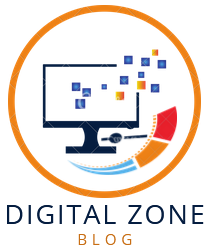
Introduction to Inventory Management Software
In today’s competitive market, efficient inventory management is crucial for the success of any business. Inventory management software development offers a comprehensive solution to achieve these goals by integrating advanced technology into inventory operations.
Key Features of Inventory Management Software
1. Real-Time Inventory Tracking
One of the most critical features of inventory management software is real-time tracking. This feature allows businesses to monitor their inventory levels instantaneously. By using RFID tags, barcodes, and IoT sensors, the software provides up-to-date information on stock levels, movement, and location. This helps in preventing stockouts and overstocking, thereby optimizing inventory levels.
2. Automated Reordering
Automated reordering is a vital component of effective inventory management. The software can predict future inventory needs based on historical data and current trends. It automatically generates purchase orders when stock levels fall below a predefined threshold. This ensures that inventory is replenished on time, reducing the risk of disruptions in the supply chain.
3. Integration with Other Systems
To streamline operations, inventory management software can be integrated with other business systems such as ERP (Enterprise Resource Planning), CRM (Customer Relationship Management), and accounting software. This integration allows for seamless data exchange, enhancing overall efficiency and providing a holistic view of business operations.
4. Advanced Reporting and Analytics
Data-driven decision-making is facilitated through advanced reporting and analytics features. The software can generate detailed reports on various aspects of inventory management, including inventory turnover rates, demand forecasting, and supplier performance. These insights enable businesses to make informed decisions that improve operational efficiency and profitability.
5. User-Friendly Interface
A user-friendly interface is essential for the effective utilization of inventory management software. The software should be intuitive and easy to navigate, allowing users to quickly access necessary information and perform tasks efficiently. Customizable dashboards and user roles can further enhance the user experience by providing relevant information based on specific roles and responsibilities.
Benefits of Developing Custom Inventory Management Software
1. Tailored Solutions
Custom inventory management software is designed to meet the unique needs of a business. Unlike off-the-shelf solutions, custom software can be tailored to specific industry requirements, operational workflows, and business goals. This customization ensures that the software addresses all the challenges faced by the business, providing a more effective solution.
2. Scalability
As businesses grow, their inventory management needs evolve. Custom software offers the flexibility to scale and adapt to changing requirements. New features and functionalities can be added as needed, ensuring that the software continues to support business growth and development.
3. Enhanced Security
Security is a top priority in software development. Custom inventory management software can be built with robust security measures to protect sensitive data from unauthorized access and cyber threats. This includes encryption, multi-factor authentication, and regular security audits.
4. Competitive Advantage
Investing in custom inventory management software can provide a significant competitive advantage. By leveraging technology to optimize inventory processes, businesses can improve efficiency, reduce costs, and enhance customer satisfaction. This not only boosts profitability but also strengthens the company’s market position.
Steps in Developing Inventory Management Software
1. Requirement Analysis
The first step in developing inventory management software is conducting a thorough requirement analysis. This involves understanding the business processes, identifying pain points, and defining the specific features and functionalities needed. Engaging with stakeholders and end-users is crucial to gather comprehensive requirements.
2. Designing the Solution
Once the requirements are defined, the next step is designing the software solution. This includes creating wireframes, mockups, and prototypes to visualize the user interface and user experience. The design phase also involves defining the architecture of the software, ensuring it is scalable, secure, and efficient.
3. Development
The development phase involves writing the code for the software based on the design specifications. This includes developing the backend infrastructure, integrating necessary technologies, and creating the frontend interface. Regular testing is conducted throughout the development process to identify and fix any issues early.
4. Testing and Quality Assurance
Quality assurance is a critical step in software development. Rigorous testing is performed to ensure the software is free from bugs and functions as intended. This includes unit testing, integration testing, performance testing, and user acceptance testing. Feedback from end-users is incorporated to make necessary improvements.
5. Deployment and Training
Once the software passes all quality checks, it is deployed in the business environment. This involves setting up the necessary infrastructure, configuring the software, and migrating data from existing systems if needed. Training sessions are conducted to educate users on how to effectively use the new software.
6. Maintenance and Support
After deployment, ongoing maintenance and support are essential to ensure the software remains functional and up-to-date. Regular updates, bug fixes, and enhancements are provided to address any issues and improve performance. Support services are available to assist users with any challenges they may encounter.
Challenges in Inventory Management Software Development
1. Data Accuracy
Maintaining accurate data is a significant challenge in inventory management. Inaccurate data can lead to incorrect stock levels, impacting the entire supply chain. Implementing real-time tracking and automated data entry can help mitigate this challenge.
2. Integration with Legacy Systems
Integrating new software with existing legacy systems can be complex. It requires careful planning and execution to ensure seamless data exchange and system compatibility. APIs and middleware can facilitate this integration, but it may still pose challenges.
3. User Adoption
Getting users to adopt new software can be difficult, especially if they are accustomed to old systems. Providing adequate training and demonstrating the benefits of the new software can encourage user adoption. User-friendly design and ongoing support are also critical.
Conclusion
Developing custom inventory management software is a strategic investment that can yield significant benefits for businesses. By providing tailored solutions, scalability, enhanced security, and a competitive edge, custom software can optimize inventory processes and drive business growth. Through careful planning, design, development, and ongoing support, businesses can overcome challenges and fully leverage the advantages of inventory management software.
